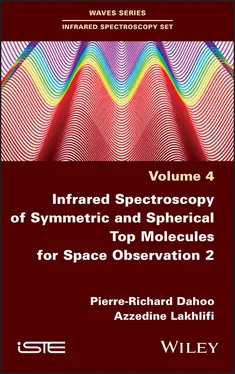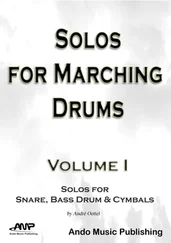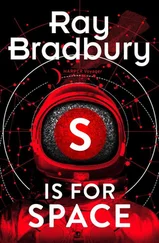There is no doubt that there is still room for embedded spectroscopy to significantly evolve into future space missions: Raman spectroscopy methods, still fresh on planetary probes (Mars Curiosity and Perseverance missions), LIDAR observations or the CRDS technique will lead the way to new advances, which laboratory techniques and theoretical models will help to interpret. The joint progress of various disciplines of chemistry, spectroscopy and of Earth and universe sciences is a remarkable example of a coordinated multidisciplinary approach that involves the joint research efforts of laboratories of various specializations. This book, the fourth volume in the series “Infrared Spectroscopy of Molecules for Space Observation”, focuses on the context and results of this research.
Pierre DROSSART
Paris Institute of Astrophysics, CNRS, Sorbonne University
June 2021
The observable universe is visible thanks to the light that reaches us from the point being observed. These extreme points form the contour of a sphere, whose limit lies at the cosmological horizon, with the Earth at its center. Other observers, located elsewhere in the universe, see a different observable sphere of the same radius. It is a relative notion. Let us recall that in cosmology, the unit of measurement for distances is the light-year, which is the distance that light travels in one year, which corresponds to about 9.5 10 12km. The megaparsec, which amounts to 3.26 million (3.26 10 6) light-years, is another unit of distance used particularly in extragalactic astrophysics. The Standard Model of Cosmology elaborated at the beginning of this century, by 2000, is perhaps the most successful model presently that offers a description of the evolution of the universe, in terms of the major stages in the history of the observable universe, as well as its current composition resulting from astronomers’ observations. In order to explain the myriad of observable galaxies and planetary systems, suns and black holes, cosmologists proposed an inflationary model.
As mentioned in the prefaces of the previous volumes, the universe is a preferred spatial environment for astrophysicists, cosmologists, astronomers and physicists, both for observations and for testing the theory of general relativity of Albert Einstein by means of predicted and observed phenomena, elaboration of new theories and their expected confirmation by observations. This is the context in which the Nobel Prize for Physics was awarded to Sir Roger Penrose in 2020, for his work on the existence of black holes based on the theory of general relativity, and to astronomers Andrea Ghez and Reinhard Genzel, for their research on the phenomena observed at the center of the Milky Way galaxy in the Sagittarius A region, where the existence of a black hole was predicted, and who showed that, indeed, a supermassive black hole was present there.
This book, the fourth volume of this series, offers an overview of several experimental instruments used for the observation and analysis of a physico-chemical system, in order to determine relevant characteristics such as the position, intensity and width of IR absorption lines. Some instruments rely on the principle of light interferences, such as the Fourier transform infrared (FTIR) spectroscopy, or on the operating principle of a resonant laser cavity, such as the cavity ring-down spectroscopy (CRDS), or the frequency comb techniques. The species present in a given atmosphere, such as the tholins on Titan (satellite of Saturn), can be prepared in situ in the laboratory and studied by spectroscopic ellipsometry, in order to determine their optical properties. This data can be used to calculate the albedo, for example. A spectrometer employing an acoustic optic tunable filter (AOTF) was used to obtain IR data on Mars and Venus from Mars Express and Venus Express missions. Data analysis made it possible to identify the nature of certain observations in the IR spectrum and to eliminate possible ambiguities. Hence, the absorption by the 628 CO 2isotopic species could be confirmed at the expense of a possible absorption by a C–H bond in the same IR spectrum. Finally, LIDAR is the preferred instrument for observing distant objects and species present in the atmosphere of planets, in a given environment.
This volume, however, focuses on the applications of the theoretical models described for diatomic and triatomic molecules to symmetric tops such as NH 3and/or spherical tops such as CH 4, when they are in an environment that may be present in the universe, i.e. when they are trapped in a nanocage of rare gas matrix, clathrate, fullerene or adsorbed on a graphite substrate. All of these models are theoretical instruments for the simulation-based observation of a molecule. The results of these theoretical models should be compared with those of experimental observations, using instruments that are specifically developed for various observation situations. The latter may be related to the observation site, such as a laboratory, an observatory or a space probe, or a telescope in space. They may also relate to the type of molecular system observed, molecules or chemical species (ions, radicals, macromolecules, nanocages, etc.) that compose, on the one hand, the atmospheres of planets, the Earth or the planets of the solar system and possibly their satellites, and on the other hand, the interstellar media, the comets or the exoplanets throughout the spatial extent of the universe, estimated by the cosmologists as 10 23km.
As underlined in Volumes 1, 2 and 3, theoretical and experimental approaches to spectroscopies led to the development of methods and instruments for the observation and analysis of the spectral characteristics of chemical species, molecules, radicals and ions in specific environments. Volumes 1 and 2 of this series [DAH 17] describe the theoretical models developed in order to determine the absorption spectra of diatomic molecules (homonuclear or heteronuclear), triatomic molecules (linear or nonlinear, symmetric or non-symmetric) in the gas phase and particularly when they are trapped in the nanocages of inert matrices of rare gases, or hydrate clathrates at a very low temperature. Volume 3 deals with the spectroscopy of symmetric and spherical tops in the gas phase.
This book (Volume 4) is a continuation of Volume 3, focusing on the application of theoretical models for the simulation of IR spectra of symmetric or spherical top species evolving in various media. The method of an extended substitution model is explained in terms of the determination of the type of symmetry of the environment in the immediate vicinity of the trapped molecule. The objective is to propose theoretical spectra that match with experimental IR data and hence identify molecules based on transitions and profiles, not only in the gas phase, but also when they are constrained to evolve in an environment, such as a nanocage or a surface.
Chapter 1provides a brief overview of the instruments developed and used in the laboratory for the study or observation of molecules, FTIR spectroscopy or laser cavity spectroscopy. An example of embedded instruments such as SPICAM, SPICAV or SOIR aboard an orbiter or a space probe serves to illustrate the instrumental context of space observation and of the international collaboration required to develop measurement instruments, as well as the analysis methods for the identification according to the scientific norms of the molecules that may be present in the probed atmosphere, such as on Mars or Venus during Mars Express and Venus Express missions. Aerosol characterization by spectroscopic ellipsometry is also discussed as a non-standard method. The LIDAR technique, which is used for observing the terrestrial atmosphere, is also described.
Chapter 2presents various contributions to the interaction potential energy between the studied molecule and its solid environment, considering the hypothesis of binary interactions: “studied molecule – molecule or atom of the environment”. The quantum “dispersion–repulsion” contribution is modeled by an atom–atom Lennard-Jones potential energy type, while the electrical contribution is modeled by a charge–charge potential energy in the case of clathrate nanocages or multipole–multipole in the case of nanocages of rare gas, fullerene or graphite substrate matrix.
Читать дальше












